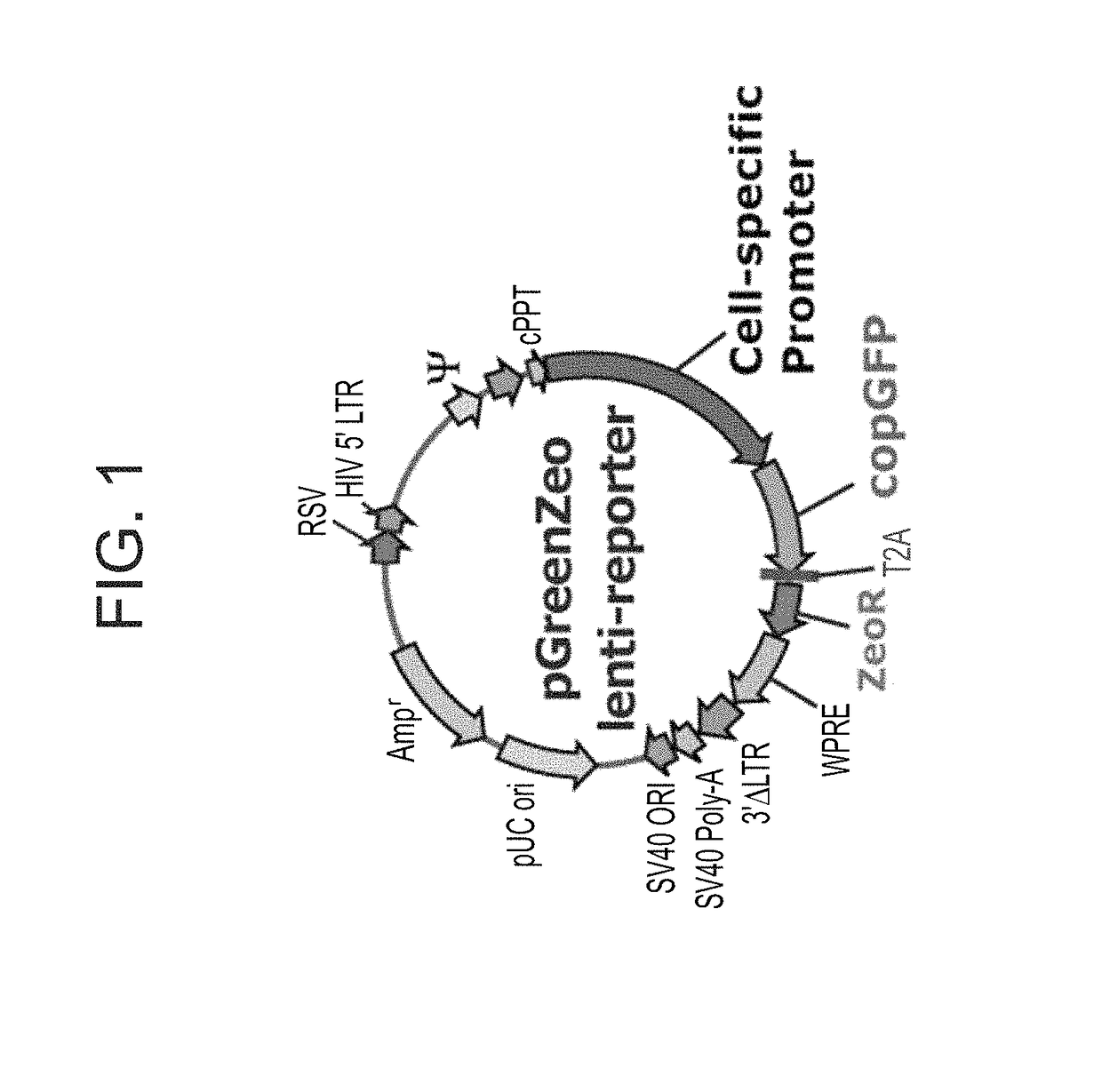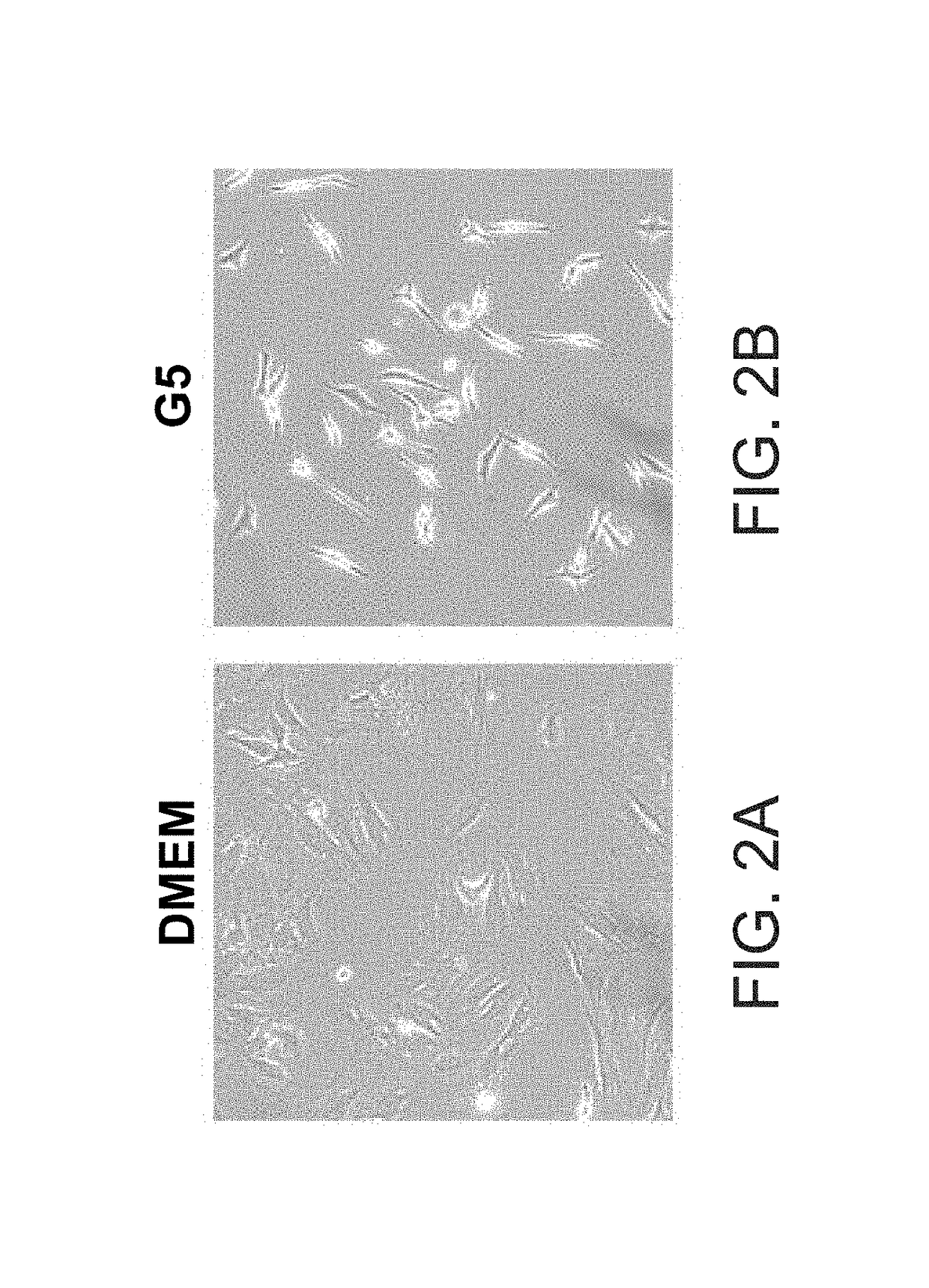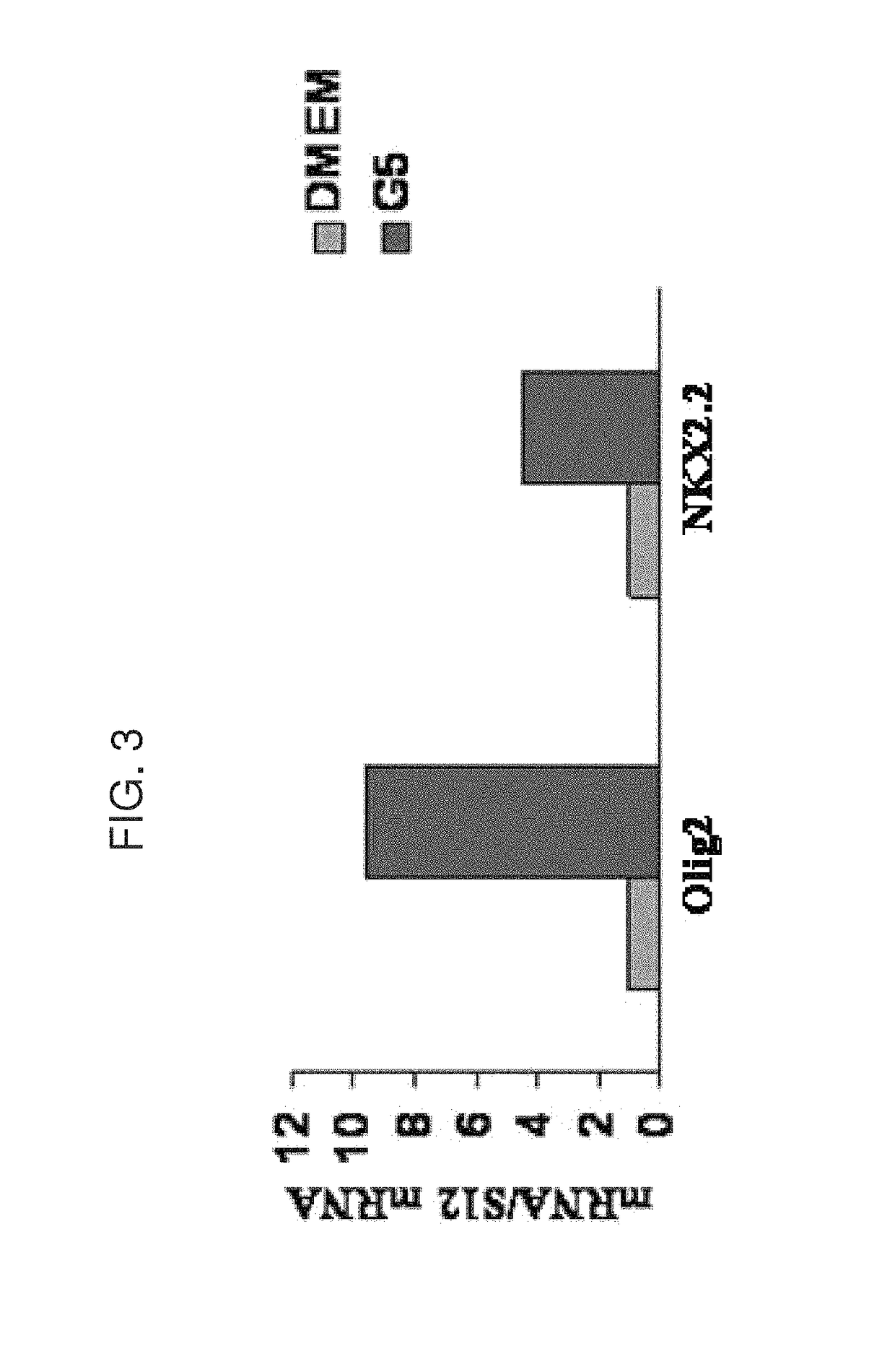Methods of generating oligodendrocytes and cell populations comprising same
a technology of oligodendrocytes and cell populations, applied in the direction of animal repellents, drug compositions, skeletal/connective tissue cells, etc., can solve the problems of long-lasting disease and incomplete restoration of neurological deficits in patients with advanced diseas
- Summary
- Abstract
- Description
- Claims
- Application Information
AI Technical Summary
Problems solved by technology
Method used
Image
Examples
example 1
Induction of Oligodendrocytic Differentiation by G5 Medium and miR-145
[0311]Results
[0312]G5 medium contains a mixture of insulin, hydrocortisone, transferrin and pyruvate. Incubation of the MSCs in G5 medium induced the generation of oligodendrocyte progenitor cells after 10-12 days in culture. After 6-8 days the cells started to exhibit bipolar morphology and to express markers of oligodendrocyte progenitor cells such as Olig1, Olig2 and NG2, whereas after 10-12 days the cells expressed higher levels of these markers (FIG. 3).
[0313]As presented in FIGS. 2A-B, the cells acquired bipolar morphology characteristics of early OPC.
[0314]To determine the effect of miR-145 on the differentiation of MSCs, three different preparations of the cells at passages 4-9 were employed. The cells were plated in DMEM+10% FCS for 24 hours and were then transfected with double-stranded RNA oligonucleotide of the mature sequence of miR-145 and with a negative control oligonucleotide. Following 2 days, ce...
example 2
MiR-145 Induces Oligodendrocytic Differentiation Also in Adipose-Derived MSCs
[0325]The effect of miR-145 on the oligodendrocytic differentiation of adipose derived MSCs was examined. Cells were transfected with 100 nM miR-145 or control miR and the cells were transferred to G5 medium. The morphological differentiation of the cells was determined following 12 days in culture. Similar to the BM-MSC, the adipose-derived MSCs also exhibited an oligodendrocytic differentiation following transfection with miR-145 (FIGS. 7A-F).
example 3
Analysis of MSC Differentiation Using Specific Neural Reporters
[0326]Oligodendrocytic differentiation of BM-MSCs was analyzed using a specific fluorescent neural reporter, MBP-GFP. In this reporter the GFP is under the MBP promoter.
[0327]As presented in FIGS. 9A-B, transfection of the cells with miR-145 and incubation with G5 resulted in a oligodendrocytic differentiation and a large number of the treated MSCs were fluorescent indicating the induction of MBP in these cells.
[0328]Addition of T3 (tri-iodothyronine) or PDGF-AA to the miR-145 transfected cells, induced a more mature phenotype of the cells and some of them expressed MOG and MBP immunoreactivity.
PUM
| Property | Measurement | Unit |
|---|---|---|
| volumes | aaaaa | aaaaa |
| thickness | aaaaa | aaaaa |
| size | aaaaa | aaaaa |
Abstract
Description
Claims
Application Information
 Login to View More
Login to View More - R&D
- Intellectual Property
- Life Sciences
- Materials
- Tech Scout
- Unparalleled Data Quality
- Higher Quality Content
- 60% Fewer Hallucinations
Browse by: Latest US Patents, China's latest patents, Technical Efficacy Thesaurus, Application Domain, Technology Topic, Popular Technical Reports.
© 2025 PatSnap. All rights reserved.Legal|Privacy policy|Modern Slavery Act Transparency Statement|Sitemap|About US| Contact US: help@patsnap.com



